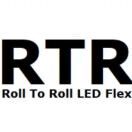Introduction:
Lighting design plays an essential role in enhancing the visual appeal of any building or structure. In the lighting design of European buildings, narrow angle wall washing lights have become a popular choice due to their ability to highlight specific architectural features and create a dramatic effect. In this paper, we will explore the use of 13°, 25°, and 45° narrow angle wall washing lights in the lighting design of European buildings, including their benefits, challenges, and best practices.
Benefits of Narrow Angle Wall Washing Lights
Narrow angle wall washing lights are ideal for highlighting specific architectural features such as columns, arches, and decorative elements. They can also create a sense of depth and texture by casting shadows and emphasizing the contours of the building. Additionally, narrow angle wall washing lights can be used to wash an entire wall or facade, creating a stunning visual effect that enhances the building’s overall aesthetic.

Challenges of Narrow Angle Wall Washing Lights
While narrow angle wall washing lights have many benefits, there are also some challenges to consider. One of the main challenges is ensuring that the light is evenly distributed and doesn’t create hot spots or dark areas. This requires careful positioning of the lights and may require the use of additional fixtures or accessories such as diffusers or louvers. Another challenge is avoiding light pollution, which can be a problem in urban areas with high levels of ambient light. To mitigate this, designers must ensure that the lights are positioned in such a way that they don’t shine directly into neighboring properties or the sky.
Best Practices for Using Narrow Angle Wall Washing Lights
To use narrow angle wall washing lights effectively, it’s important to follow some best practices. First, designers should carefully consider the beam angle of the lights and choose one that is appropriate for the size and scale of the building or architectural feature. A 13° or 25° beam angle is typically used for highlighting specific features, while a 45° beam angle is better for larger areas or general washes of light.
Second, designers should position the lights strategically to achieve the desired effect. Typically, the lights are placed close to the building and angled towards the walls or facades that you want to highlight. This can help create interesting shadows and textures that enhance the building’s character.
Third, designers should consider the color temperature of the light. For a warm and inviting look, choose lamps with a lower color temperature (around 2700K), while for a more modern look, go for lamps with a higher color temperature (around 4000K).
Fourth, designers should be mindful of light pollution and position the lights in such a way that they don’t shine directly into neighboring properties or the sky. Using shields or other accessories to help direct the light where you want it can also be helpful.

Case Study: The Louvre Pyramid
One of the most iconic examples of the use of narrow angle wall washing lights in European architecture is the Louvre Pyramid in Paris. Designed by architect I.M. Pei, the pyramid is a stunning example of modern architecture that complements the historic surroundings of the Louvre Museum. The pyramid is illuminated at night using a combination of narrow angle wall washing lights and spotlights, which create a dramatic effect that highlights the pyramid’s unique shape and texture.
Conclusion:
In conclusion, narrow angle wall washing lights are an effective tool for enhancing the visual appeal of European buildings and architectural features. They can highlight specific features, create interesting shadows and textures, and wash an entire wall or facade with light. However, designers must carefully consider the beam angle, positioning, color temperature, and light pollution when using these lights. By following best practices and looking to iconic examples like the Louvre Pyramid, designers can create stunning lighting designs that enhance the beauty and character of European architecture.

Tel: +86-755-86906904
Website: www.rtrledwallwasher.com
E-mail: intsale09@rtrled.com
